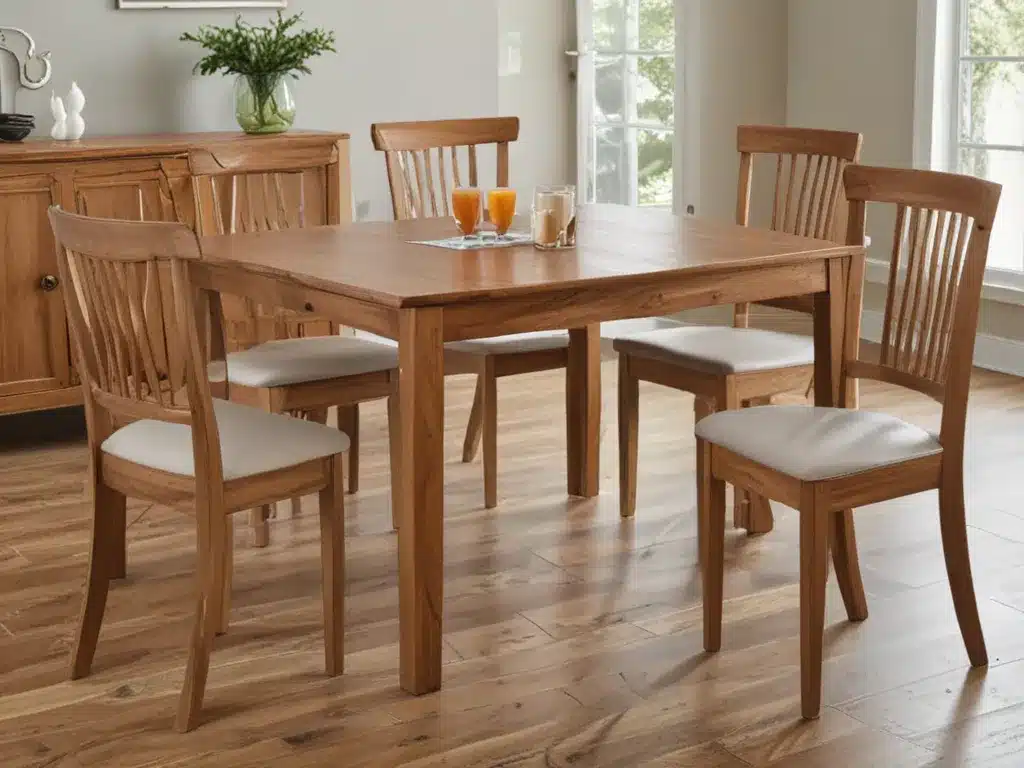Introduction
As the seasons change and spring arrives, it’s a great time to freshen up your home. One of the best ways to refresh your space is by cleaning your wood furniture. Proper cleaning can remove dirt, grime, and restore the natural beauty of wood. With some simple cleaning solutions and techniques, you can have your wood furniture looking renewed in no time.
Assessing the Current Condition
Before beginning to clean, inspect each piece of wood furniture carefully. Check for scratches, dents, warped surfaces, loose joints, etc. Make notes on the current condition of each piece. This helps you track progress after cleaning and know if any repairs are needed. Also, look closely at the type of wood and any finishes. Certain woods and finishes require specialized care. With an understanding of the current state of each furniture piece, you can proceed properly.
Gathering Supplies
Cleaning wood furniture does not require fancy cleaners. Simple ingredients found in most homes are effective. Here are some basic supplies to gather before starting:
- Soft cloths: Old t-shirts, microfiber cloths, cheesecloths
- Mild detergent: Unscented dish soap or Murphy Oil soap
- Vinegar: Helps cut through dirt and grime
- Olive oil or almond oil: Conditions wood
- Soft brush: Helps lift dirt from crevices
- Toothbrush: For scrubbing in tiny spaces
- Spray bottle: For applying cleaner
- Two buckets: One for wash water, one for rinse
Having these supplies ready will make the process smooth.
Dusting and Dry Cleaning
Before cleaning wood furniture with any liquid solutions, it’s best to start by using a dry cloth to wipe away loose dust and debris. A microfiber cloth works well. Work methodically from top to bottom on each piece to gently wipe away surface dirt. For intricate carvings or details, use a soft brush to lift particles.
After dusting, you can perform additional dry cleaning using bread. Simply take a fresh piece of bread and use the soft interior to gently rub areas of furniture that need it. The bread can help lift stains without damaging wood. Remove any crumbs when finished.
Washing with Mild Detergent
Once dust and surface debris are removed, it’s time to clean the wood more thoroughly. Fill one bucket with warm water and add a small amount of a mild detergent like dish soap or Murphy Oil soap. Dampen your wash cloth in the solution, wring it out so it’s not dripping, and wipe down the furniture.
Take care not to soak the furniture or leave large amounts of water sitting on the surface. Work systematically again from top to bottom. If needed, use your soft brush dipped in the solution to help lift dirt from crevices.
After washing an area, immediately rinse with a clean damp cloth and fresh water from your second bucket. Throughly removing detergent prevents buildup.
Treating Tougher Stains
For tougher grime or stains, make a cleaning paste with baking soda and water. Dip your cloth in the paste and gently rub on affected areas using small circular motions. The abrasive but non-damaging paste can help lift stubborn gunk. Rinse thoroughly after.
For stains like grease, oil, or wax that are not surface level, you may need something stronger. Mix a solution of 1/2 white vinegar and 1/2 warm water and wipe onto the stain with a clean cloth. Let it sit for a few minutes so the vinegar can penetrate. Then, scrub vigorously with a toothbrush before rinsing clean. Vinegar’s acidity removes such stains beautifully.
Be patient when treating tough stains and allow time for the cleaning solutions to work before scrubbing. This prevents damage to the wood.
Conditioning and Polishing
Once cleaned, it’s ideal to add a layer of conditioner or polish to wood furniture. This helps moisturize wood and provide protection. Use a small amount of olive oil or almond oil and apply a thin layer across all surfaces and crevices using a clean, soft cloth.
Let the oil soak in for at least 30 minutes. Then, buff the furniture with a dry cloth to remove any excess. This leaves wood looking revitalized. For extra shine, follow oil with a beeswax wood polish and buff vigorously.
Ongoing Care
To keep wood furniture looking its best after deep cleaning, be sure to:
- Use coasters under bottles/cups
- Dust regularly with microfiber cloth
- Wipe up spills immediately
- Avoid harsh cleaners or abrasive pads
- Re-apply conditioner monthly
- Consider re-sealing or refinishing periodically
With some elbow grease and TLC, you can have your wood furniture looking like new again this season. Just be sure to assess condition, use mild cleaners, treat stains properly, and maintain the revival with conditioning. With this simple full cleaning routine, your wood will shine beautifully.







